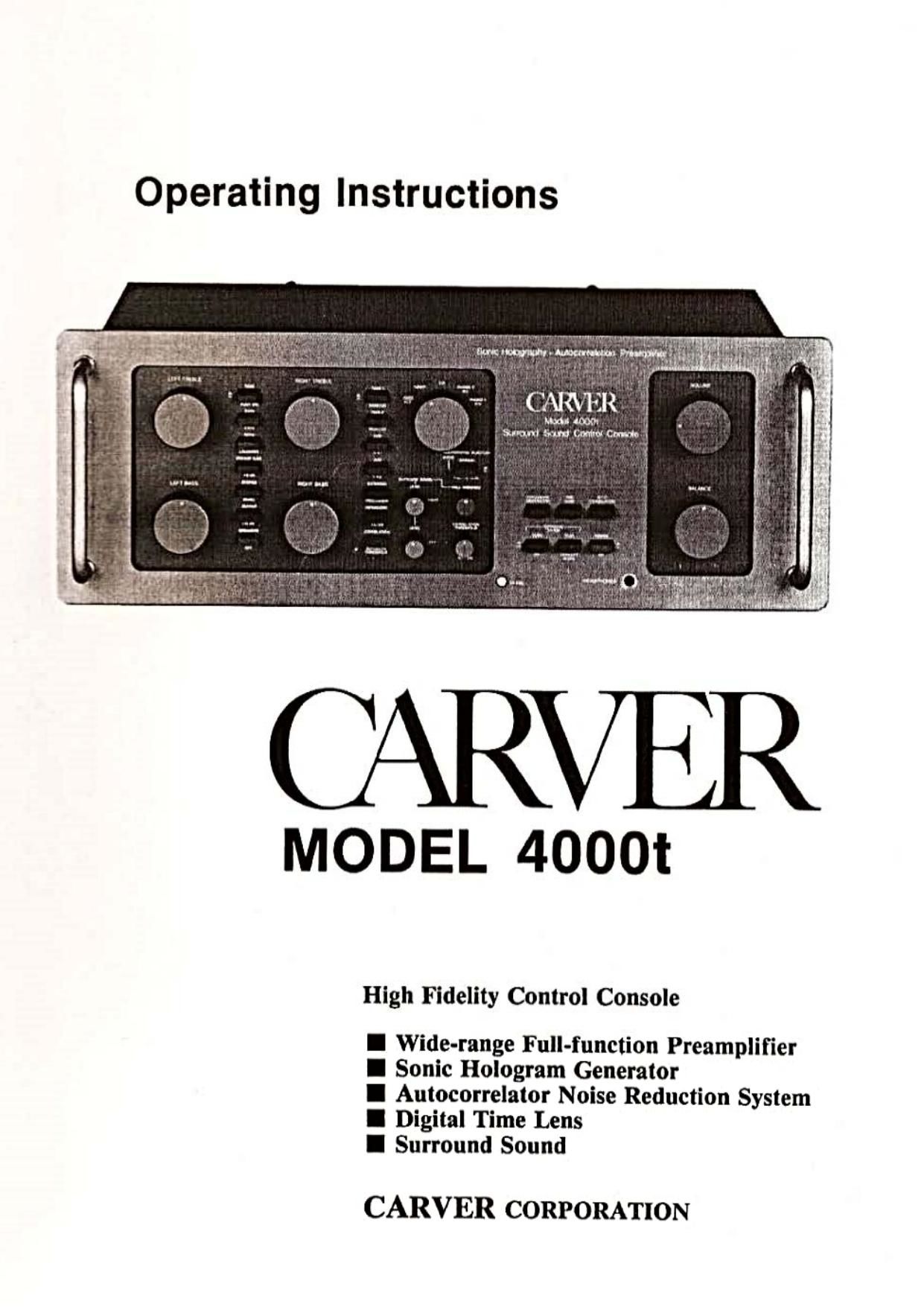Carver 4000T Owners Manual
This is the 35 pages manual for Carver 4000T Owners Manual.
Read or download the pdf for free. If you want to contribute, please upload pdfs to audioservicemanuals.wetransfer.com.
Page: 1 / 35
